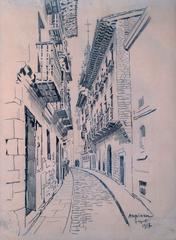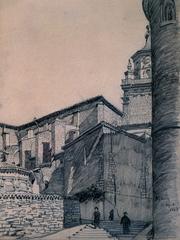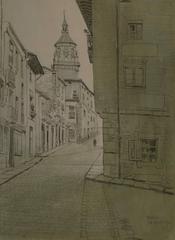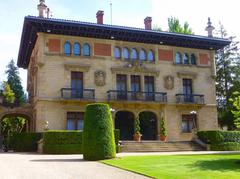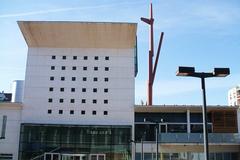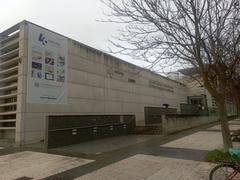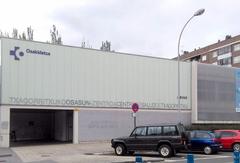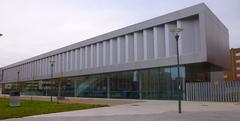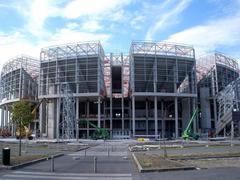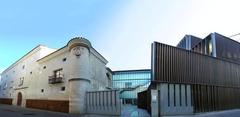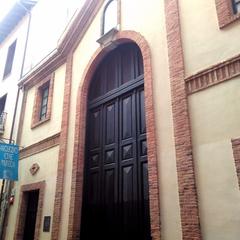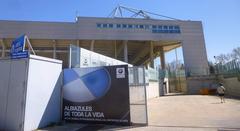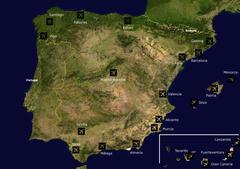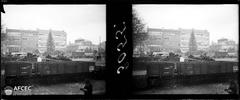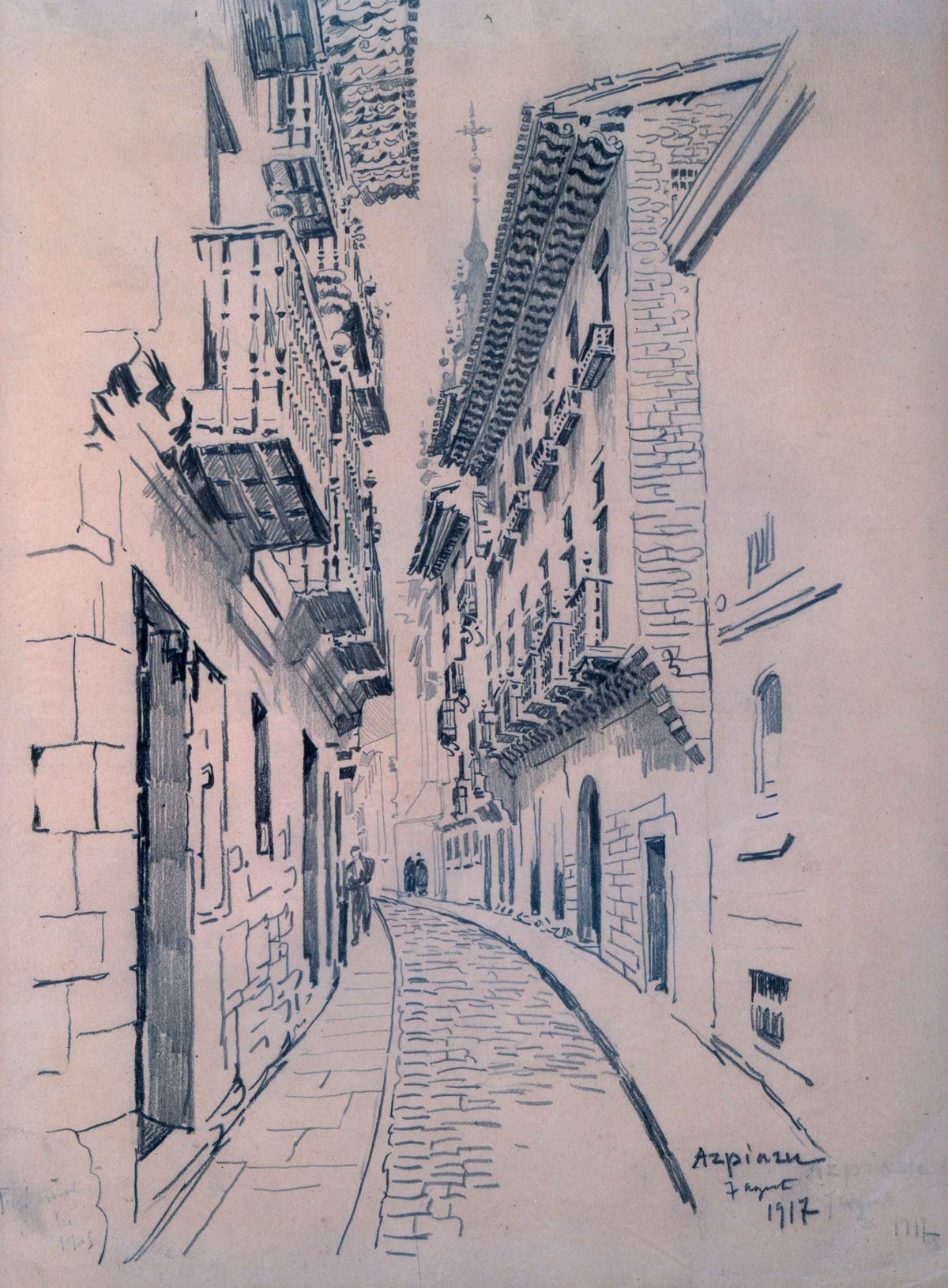
Comprehensive Guide to Catedral de Santa María / Santa Maria Katedrala in Vitoria-Gasteiz, Spain
Date: 18/07/2024
Introduction
Nestled in the heart of Vitoria-Gasteiz, the Catedral de Santa María, also known as Santa Maria Katedrala, stands as a testament to centuries of architectural, cultural, and historical evolution. This iconic structure, with its blend of Romanesque, Gothic, Renaissance, and Baroque styles, is a must-visit destination for anyone interested in history, art, and spirituality. This guide will delve into the rich history of the cathedral, its architectural marvels, and provide essential visitor information, including visiting hours, ticket prices, and travel tips to enhance your experience. Whether you are an architecture enthusiast, a history buff, or simply seeking a place of peace and reflection, the Catedral de Santa María offers a truly unforgettable experience.
Table of Contents
- Introduction
- A History Forged in Stone and Faith
- Visitor Information
- Travel Tips
- Special Events and Guided Tours
- Photographic Spots
- FAQ Section
- Conclusion
A History Forged in Stone and Faith
The Catedral de Santa María, or Santa Maria Cathedral as it’s known in English, isn’t just a place of worship; it’s a living testament to the passage of time in Vitoria-Gasteiz. Its story is intricately woven with the city’s own, marked by periods of construction, renovation, and even rediscovery.
From Fortress to Foundation (12th - 13th Century)
Our journey begins in the late 12th century, a time when Vitoria-Gasteiz was still finding its footing. King Sancho VI of Navarre, recognizing the strategic importance of the settlement, granted it town privileges in 1181. During this period, the first iteration of Santa Maria Cathedral emerged, not as a grand cathedral, but as a fortified church. This Romanesque structure, known as the Primitive Church of Santa Maria, served the dual purpose of spiritual sanctuary and defensive stronghold.
Expansion and Evolution (14th - 15th Century)
As Vitoria-Gasteiz prospered, so too did its ambitions for Santa Maria. The 14th century ushered in a period of significant expansion. The modest Romanesque church began to transform, making way for a larger, more elaborate Gothic structure. This phase saw the addition of the cathedral’s impressive three naves, reflecting the architectural trends sweeping across Europe.
A Period of Pause (16th Century)
The 16th century brought with it a pause in the cathedral’s development. Construction halted, leaving the cathedral unfinished. This wasn’t necessarily due to a lack of resources or will, but rather a shift in priorities as the Renaissance began to cast its influence on artistic and architectural tastes.
Restoration and Renewal (19th - 20th Century)
For centuries, Santa Maria Cathedral stood incomplete, its beauty veiled by the passage of time. However, the late 19th and early 20th centuries saw a renewed interest in the cathedral’s fate. Architect Espinós spearheaded a restoration project, breathing new life into the aging structure. This restoration focused on consolidating the building, ensuring its structural integrity for generations to come.
An Open Book of History (20th - 21st Century)
The latter half of the 20th century marked a turning point in Santa Maria Cathedral’s story. Recognizing its historical and cultural significance, a comprehensive restoration project was undertaken. This ambitious endeavor, launched in 1994, aimed to restore the cathedral to its former glory while simultaneously uncovering its hidden past. What makes this restoration truly unique is its commitment to transparency. The project, dubbed “Open for Works / Open to the Public,” invited visitors to witness the restoration process firsthand. This innovative approach not only allowed the public to engage with the cathedral’s history but also provided valuable insights for archaeologists and historians.
The restoration unearthed a treasure trove of artifacts and architectural details, shedding light on the cathedral’s evolution over the centuries. These discoveries, carefully preserved and integrated into the restored structure, offer a tangible link to the past, allowing visitors to trace the cathedral’s journey through time.
Visitor Information
Visiting Hours
The Catedral de Santa María is open to visitors from 10:00 AM to 8:00 PM daily. However, visiting hours may vary during holidays and special events, so it’s advisable to check the official website for the most current information (Catedral de Santa María).
Ticket Prices
Tickets for entry to the cathedral are priced at €5 for adults, €3 for students and seniors, and free for children under 12. Special guided tours are also available at an additional cost.
Accessibility
The cathedral is equipped with ramps and elevators to accommodate visitors with mobility issues. Wheelchair-accessible restrooms are also available on-site.
Travel Tips
Best Times to Visit
The best time to visit the Catedral de Santa María is during the spring and fall when the weather is pleasant, and the crowds are thinner. Early mornings and late afternoons are ideal for a more serene experience.
What to Bring
Comfortable walking shoes are recommended as you’ll be exploring both the cathedral and its surrounding areas. A camera is a must for capturing the stunning architecture.
Nearby Attractions
While in Vitoria-Gasteiz, don’t miss the opportunity to visit nearby attractions like the Plaza de la Virgen Blanca, the Artium Museum, and the Basque Museum of Contemporary Art.
Special Events and Guided Tours
The cathedral hosts various special events throughout the year, including classical music concerts and art exhibitions. Guided tours are available in multiple languages and provide in-depth insights into the cathedral’s history and architecture.
Photographic Spots
For the best photos, head to the top of the bell tower for panoramic views of Vitoria-Gasteiz. Inside the cathedral, the intricate details of the Gothic architecture make for stunning close-up shots.
FAQ Section
What are the visiting hours for Catedral de Santa María?
- The cathedral is open from 10:00 AM to 8:00 PM daily.
How much do tickets cost for Catedral de Santa María?
- Tickets are €5 for adults, €3 for students and seniors, and free for children under 12.
Is the cathedral wheelchair accessible?
- Yes, the cathedral is equipped with ramps and elevators for visitors with mobility issues.
Conclusion
Today, Catedral de Santa María stands as a symbol of resilience and the enduring spirit of Vitoria-Gasteiz. Its walls whisper tales of faith, conflict, and artistic endeavor, inviting visitors to delve into its rich history and appreciate the craftsmanship that has withstood the test of time. From its stunning Gothic architecture to the intricate details of its chapels and cloisters, the cathedral offers a unique blend of historical and cultural significance. Don’t forget to download the mobile app Audiala for more interactive experiences and follow us on social media for the latest updates (Catedral Vitoria, Audiala). Plan your visit today and immerse yourself in the rich heritage of this beautiful Basque city.
References
- Catedral de Santa María: Official website for detailed visitor information.
- The Portico of Light: Information on the modern entrance addition.
- Visiting the Cathedral of Vitoria-Gasteiz: Comprehensive guide to hours, tickets, and nearby attractions.
